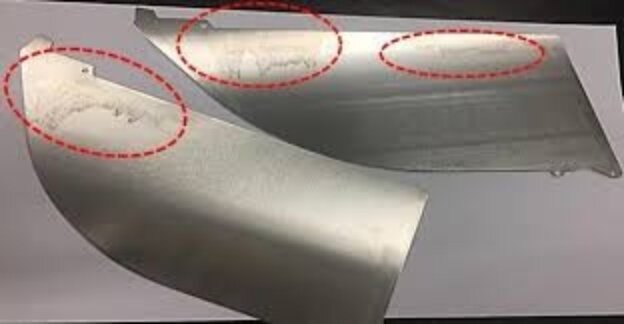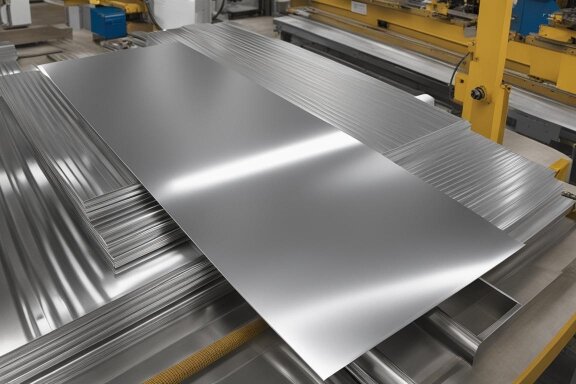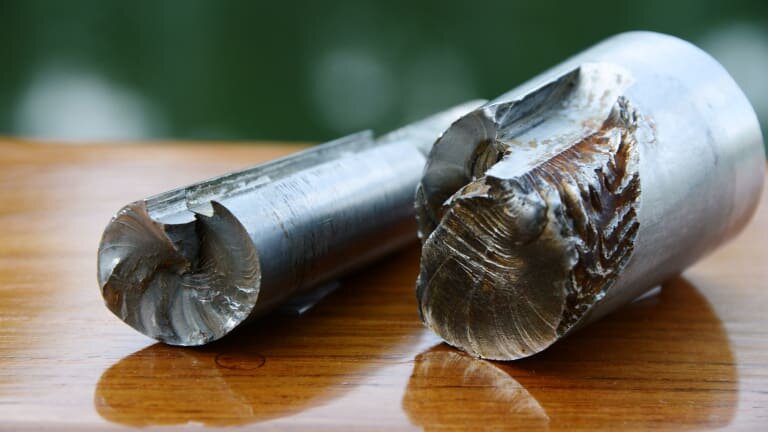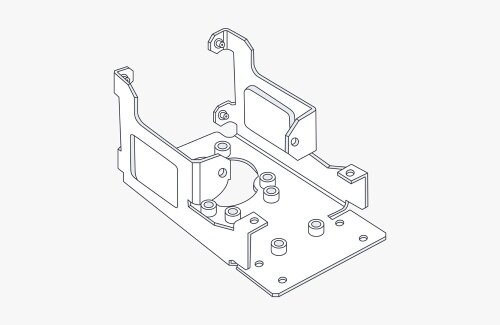Se avete mai visto un involucro saldato deformarsi o una staffa incrinarsi sotto sforzo, sapete già che un'eccellente saldatura a punti non avviene per caso. È frutto di precisione e controllo.
La saldatura a punti è uno dei metodi più veloci e affidabili per unire le lamiere nella produzione moderna. Viene utilizzata per le custodie elettriche, i telai, gli armadi e i componenti automobilistici. Tuttavia, per ottenere saldature forti, ripetibili e pulite non bastano una macchina e degli elettrodi.
In Shengen, i nostri ingegneri hanno trascorso oltre dieci anni a perfezionare il processo per i clienti di tutto il mondo. Ecco sette punti pratici che aiutano a garantire che il vostro prossimo progetto soddisfi gli standard di resistenza e di aspetto.
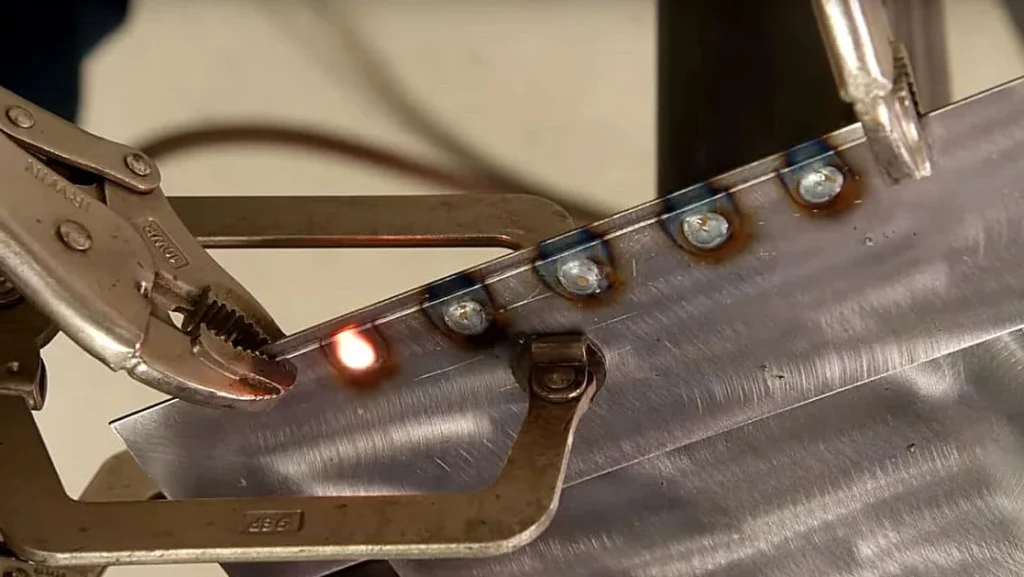
1. Selezione e compatibilità dei materiali
Una buona saldatura inizia con il materiale giusto. Saldatura a punti è più efficace con l'acciaio dolce, l'acciaio inossidabile e l'alluminio. Questi metalli conducono bene l'elettricità e resistono alle alte temperature senza incrinarsi.
L'acciaio a basso tenore di carbonio è il più facile da saldare. Fonde in modo uniforme e si raffredda senza problemi.
Le superfici rivestite, tuttavia, possono causare problemi. L'acciaio galvanizzato rilascia fumi e contamina gli elettrodi, mentre parti verniciate o rivestite a polvere possono bloccare la corrente. Applicare sempre i rivestimenti dopo saldatura quando possibile.
L'alluminio richiede una corrente più elevata, circa tre o quattro volte superiore a quella dell'acciaio dolce, perché conduce il calore più rapidamente. Può essere saldato bene, ma solo con un attento controllo della corrente, della pressione e del tempo. La scelta della lega giusta e la regolazione tempestiva delle impostazioni consentono di risparmiare tempo e denaro nel lungo periodo.
2. Gamma di spessore della lastra
Lo spessore ideale per la saldatura a punti è compreso tra 0,020″ e 0,090″ (0,5-2,3 mm). All'interno di questo intervallo, è possibile ottenere pezzetti di saldatura puliti con poca distorsione. Se il foglio è troppo sottile, può bruciarsi. Se è troppo spessa, occorrono corrente e pressione molto più elevate, con conseguente riduzione dell'efficienza.
Una buona linea guida è quella di mantenere un rapporto di spessore di 3:1 tra la lamiera superiore e quella inferiore. Ad esempio, la saldatura di acciaio dolce da 0,8 mm a 2,0 mm è accettabile, ma è preferibile saldare 0,8 mm a 3,0 mm con TIG o Saldatura MIG.
Controllare sempre che lo spessore totale della pila rimanga entro i limiti della macchina, soprattutto in prossimità di angoli, flange o bordi piegati.

3. Tipo di elettrodo e manutenzione
Anche la migliore configurazione di saldatura può fallire se gli elettrodi sono in cattive condizioni. La maggior parte delle fabbriche utilizza elettrodi di rame-cromo-zirconio. Questi elettrodi offrono un buon equilibrio tra resistenza e conduttività.
Con il tempo, le punte degli elettrodi possono appiattirsi, ossidarsi o accumulare residui. Ciò causa una pressione non uniforme e una scarsa qualità della saldatura. È meglio pulire o sostituire gli elettrodi ogni 500-1.000 saldature. Punte lisce e ben sagomate assicurano una corrente stabile e riducono gli schizzi.
Mantenere anche il sistema di raffreddamento in buone condizioni. Un flusso d'acqua di circa 4 L/min per elettrodo aiuta a prevenire il surriscaldamento e a mantenere costanti le saldature durante i lavori più lunghi.
4. Parametri di saldatura: Tempo, corrente e pressione
La saldatura a punti dipende da tre impostazioni principali: corrente, pressione e tempo.
Ognuno svolge un ruolo:
- Attuale genera il calore che fonde il metallo.
- Pressione mantiene le lenzuola ben salde tra loro.
- Tempo controlla la dimensione dell'area fusa (pepita).
Ad esempio, la saldatura di acciaio dolce da 1 mm può richiedere una corrente di 8-10 kA, una pressione di 40 psi e circa 0,3 secondi di tempo di saldatura. Le impostazioni esatte dipendono dal tipo di materiale, dallo spessore e dalle esigenze estetiche.
Le macchine moderne possono memorizzare "programmi di saldatura" preimpostati. Noi di Shengen utilizziamo sistemi di controllo innovativi che regolano automaticamente le impostazioni in base alle letture della resistenza in tempo reale. In questo modo ogni saldatura è forte e costante.
5. Gestione del calore e raffreddamento
Le parti sottili in acciaio inox o alluminio possono facilmente deformarsi o scolorirsi se sottoposte a calore eccessivo. La gestione del calore è fondamentale sia per la resistenza che per l'estetica.
Utilizzare sempre elettrodi raffreddati ad acqua per la saldatura continua. Mantenere pulite le linee del refrigerante e controllare il flusso all'inizio di ogni turno.
Quando si saldano pezzi di grandi dimensioni, cambiare la sequenza per distribuire il calore in modo uniforme. Saltare tra i lati opposti del pezzo invece di muoversi in linea retta.
Per esempio, quando si salda un pannello di porta in acciaio inox da 1,2 mm, alternando le saldature da sinistra a destra e aspettando 2-3 secondi tra una saldatura e l'altra si può mantenere la superficie piatta e liscia.
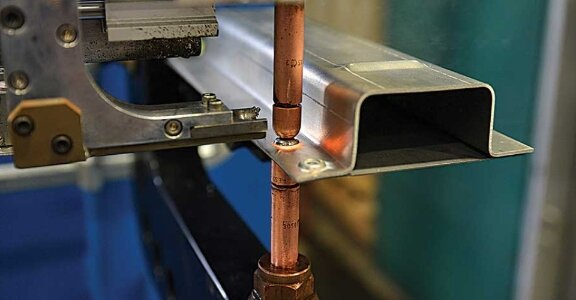
6. Posizionamento delle saldature e progettazione dei giunti
La posizione di ogni saldatura è importante. Mantenere un minimo di 10 volte lo spessore della lamiera tra le saldature a punti. Per un pannello di 1 mm, ciò significa una distanza di circa 10 mm. In questo modo si evitano sovrapposizioni di zone termiche o deformazioni.
Non posizionare le saldature troppo vicine a bordi, curve o fori. Mantenere una distanza di almeno 2 volte lo spessore della lastra da qualsiasi bordo per evitare la bruciatura.
Assicurarsi che gli elettrodi possano raggiungere entrambi i lati dell'articolazione. Se un flangia o un angolo blocca l'accesso, modificare il progetto o aggiungere un leggero rilievo all'area. Noi di Shengen rivediamo spesso i progetti e suggeriamo semplici modifiche che migliorano la resistenza e riducono i costi di rilavorazione.
7. Ispezione post-saldatura e controllo qualità
Il controllo delle saldature è la fase finale. Una buona saldatura a punti deve apparire liscia e rotonda, senza crepe o segni profondi.
Le dimensioni delle pepite devono essere circa 4-6 volte lo spessore della lastra: per una lastra di 1 mm, sono 4-6 mm.
I controlli visivi aiutano a identificare problemi come schizzi o saldature deboli. Per verifiche più approfondite, si utilizzano peel test o chisel test per confermare la resistenza. Nella produzione di grandi volumi, i sistemi di monitoraggio a ultrasuoni o a resistenza possono rilevare automaticamente i difetti.
Shengen segue gli standard di ispezione ISO 9001:2015. Ogni progetto prevede il tracciamento dei parametri e il campionamento delle saldature per garantire la coerenza da lotto a lotto.
Considerazioni sulla progettazione e limitazioni
La saldatura a punti ha dei limiti. Non è a tenuta stagna, quindi non dovrebbe essere utilizzata per serbatoi o parti in pressione. In questi casi, la saldatura a cordone o la saldatura TIG sono più efficaci.
Entrambi gli elettrodi devono entrare in contatto con il giunto, quindi non possono raggiungere aree chiuse o flange nascoste. La collaborazione con il fabbricante aiuta a evitare questi problemi.
Anche la qualità della superficie è importante. La saldatura a punti può produrre una finitura liscia di Classe A, ma possono essere ancora visibili lievi segni. Se il pezzo deve apparire perfetto, prevedete una leggera carteggiatura o un rivestimento superficiale in un secondo momento.
Per l'automazione, assicurarsi che il design del pezzo lasci spazio sufficiente per i bracci robotici e garantisca un contatto costante con gli elettrodi. Un'attenta pianificazione in fase di progettazione si traduce in minori problemi in fase di produzione.
Conclusione
La saldatura a punti offre giunti resistenti, veloci ed economici, se eseguita correttamente. Concentrandosi su queste sette aree chiave, è possibile ridurre al minimo la distorsione, migliorare la coerenza e ottenere saldature dall'aspetto e dalle prestazioni ottimali.
La chiave di lettura è semplice: pianificare la saldatura fin dalla fase di progettazione. In questo modo si risparmia tempo, si riducono i costi e si ottengono risultati affidabili.
Avete bisogno di una saldatura a punti precisa per il vostro prossimo progetto? Il team di ingegneri di Shengen offre servizi esperti di fabbricazione di lamiere, tra cui saldatura a punti avanzata, taglio laser e piegatura CNC. Caricate oggi stesso il vostro file CAD per una revisione DFM gratuita.
Domande frequenti
Qual è il materiale più resistente per la saldatura a punti?
L'acciaio dolce è di solito il materiale più resistente e affidabile per la saldatura a punti. Il suo basso contenuto di carbonio aiuta il calore a diffondersi in modo uniforme, creando solide pepite di saldatura. Anche l'acciaio inossidabile funziona bene, ma richiede un controllo più stretto della corrente e del tempo di saldatura.
Le saldature a punti possono essere a tenuta stagna?
No. Le saldature a punti non sono a tenuta stagna perché creano punti di fusione separati invece di una cucitura continua. Se un pezzo deve trattenere un liquido o resistere alla pressione, come nel caso di serbatoi o alloggiamenti sigillati, utilizzare invece la saldatura a cordone o la saldatura TIG.
Come posso evitare la deformazione durante la saldatura a punti?
Per ridurre la deformazione, gestire il calore e l'ordine di saldatura. Utilizzare elettrodi raffreddati ad acqua, lasciare 2-3 secondi di raffreddamento tra una saldatura e l'altra e cambiare lato durante la saldatura per distribuire il calore in modo uniforme. Per i materiali sottili sotto 1 mm, abbassare leggermente la corrente e aumentare la pressione per un migliore controllo. Utilizzare sempre un serraggio saldo e uniforme per mantenere il pezzo piatto durante la saldatura.
Quali sono i segni comuni di una cattiva saldatura a punti?
Le cattive saldature spesso presentano bruciature, ammaccature profonde, schizzi o segni scuri intorno all'area di saldatura. Una buona saldatura deve apparire rotonda, pulita e di dimensioni uniformi. Se la saldatura appare ruvida o affondata, la pressione o la corrente potrebbero essere troppo elevate.
La saldatura a punti è abbastanza resistente per le parti in lamiera ad alta resistenza?
Sì, se eseguita correttamente. La saldatura a punti offre una forte resistenza al taglio e alla trazione, in particolare nelle lamiere d'acciaio di dimensioni comprese tra 0,020″-0,090″ (0,5-2,3 mm). Per una maggiore resistenza, utilizzare saldature multiple con una spaziatura adeguata e un buon allineamento.
Ciao, sono Kevin Lee

Negli ultimi 10 anni mi sono immerso in varie forme di lavorazione della lamiera, condividendo qui le mie esperienze in diverse officine.
Contattate

Kevin Lee
Ho oltre dieci anni di esperienza professionale nella fabbricazione di lamiere, con specializzazione nel taglio laser, nella piegatura, nella saldatura e nelle tecniche di trattamento delle superfici. In qualità di direttore tecnico di Shengen, mi impegno a risolvere sfide produttive complesse e a promuovere innovazione e qualità in ogni progetto.

